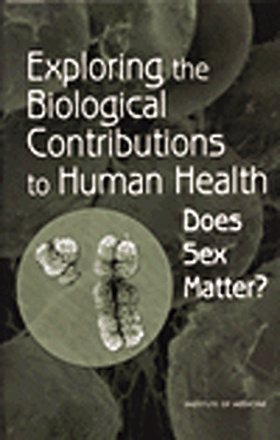Sites of interest on the World Wide Web—edited by David Siderovski
Targets from the Smallest Blueprint?
In MI’s interview this month ( pages 62–66), Dr. Claire M. Fraser, President of The Institute for Genomic Research (TIGR), discusses the motivation for sequencing the genome of Mycoplasma genitalium , the organism with the smallest known complement of genes. Even with our current wealth of knowledge of metabolic pathways (http://www.genome.ad.jp/kegg/metabolism.html ), atomic-resolution structures (http://www.pdb.org/), and the modular nature of protein domains (http://smart.embl-heidelberg.de/), many proteins of many organisms remain a complete mystery in terms of their function. TIGR held a roundtable discussion on this issue upon publishing their analysis of the minimal gene set necessary for laboratory growth of M. genitalium (
); MP3-formatted audio of that discussion and links to related news-media reports can be found on the TIGR Web site (http://www.tigr.org/minimal ). The genome of M. genitalium is but one of sixty-six complete genomes of unicellular organisms that form the Clusters of Orthologous Groups (COGs) database (http://www.ncbi.nlm.nih.gov/COG/new/), an attempt at a phylogenetic classification of proteins. Each COG includes proteins across all genomes thought to be “orthologous” or connected through vertical evolutionary descent. Companies like Protein Pathways of Woodland Hills, CA (http://www.proteinpathways.com) are trying to use such computational strategies to predict protein function on more than just sequence similarity and thereby identify novel drug targets in disease-causing organisms.
Sex and Drugs
Also in this issue of MI , Blaustein and colleagues discuss historical and prevailing thoughts on the different responses women and men have to digoxin therapy, as well as the perception and/or reality that women are underrepresented in clinical trials (pages 68–72). In 1990, the non-profit Society for Women’s Health Research (http://www.womens-health.org/) was formed specifically to campaign for greater inclusion of women in medical research studies and greater funding for research on conditions uniquely experienced by women. In response, President Clinton signed the National Institutes of Health Revitalization Act of 1993 (Public Law No. 103-43; http://thomas.loc.gov) which mandates that the NIH ensure the involvement of women and minorities as subjects in clinical research. The Society for Women’s Health Research continues to advocate for “sex-based biology,” and recently helped to sponsor a U.S. Institute of Medicine report (http://www.nap.edu/books/0309072816/html/) entitled “Exploring the Biological Contribution to Human Health: Does Sex Matter?” But are women truly underrepresented in clinical trials? A recent meta-analysis of more than 100,000 clinical trials (http://www.jhu.edu/~gazette/2001/may0701/07mennot.html), conducted by Dr. Curtis L. Meinert and colleagues at the Johns Hopkins University Center for Clinical Trials (http://iws1.jhsph.edu/Research/Centers/CCT/), concluded that men, and not women, are the understudied sex.
Drugs from the Sea
Heading to Sea World (http://www.seaworld.com) anytime soon? While you’re there, consider the untapped potential for drug discovery that marine life holds (http://www.latimes.com/features/health/la-021102marine.story). A recent report entitled “Marine Biotechnology in the Twenty-First Century” from the National Academies (http://www.nap.edu/books/0309083427/html/) considers both biomedical and environmental “bioremediation” applications of marine organisms and derived natural products. Companies such as Cognetix Inc. of Salt Lake City, Utah (http://www.cognetix.com/go.html) are already “mining the sea” for new human therapeutics; for example, Elan Pharmaceuticals’ Prialt (ziconotide), a synthetic form of the cone snail peptide φ -conotoxin MVIIA, has recently entered Phase III clinical trials of long-term intrathecal delivery for treatment of severe chronic pain (http://ClinicalTrials.gov/show/NCT00047749).
- © American Society for Pharmacology and Experimental Theraputics 2003






